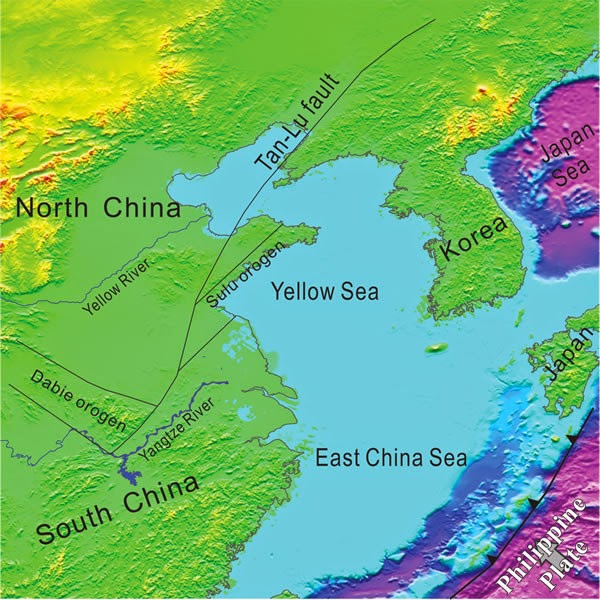
Seismic investigations from the Qinling-Dabie-Sulu orogenic belt in eastern China suggest that this region was affected by extreme mantle perturbation and crust-mantle interaction during the Mesozoic era. The Qinling-Dabie-Sulu orogenic belt formed through the collision between the North and South China blocks, which produced large-scale destruction of the cratonic lithosphere, accompanied by widespread magmatism and metallogeny.
Global mantle convection significantly impacts processes at the surface of Earth and can be used to gain insights on plate driving forces, lithospheric deformation, and the thermal and compositional structure of the mantle. Upper-mantle seismic anisotropy is widely employed to study both present and past deformation processes at lithospheric and asthenospheric depths.
The majority of seismic data from stations located near Qinling-Dabie-Sulu orogenic belt show anisotropy with an E-W- or ENE-WSW-trending fast polarization direction, parallel to the southern edge of the North China block. This suggests compressional deformation in the lithosphere due to the collision between the North and South China blocks.
Although the deep root of the craton was largely destroyed by cratonic reactivation in the late Mesozoic, these results suggest that the “fossilized” anisotropic signature is still preserved in the remnant lithosphere beneath eastern China.
Reference:
Xiaobo Tian, M. Santosh. Fossilized lithospheric deformation revealed by teleseismic shear wave splitting in eastern China. GSA Today, 2015; 4 DOI: 10.1130/GSATG220A.1
Note : The above story is based on materials provided by Geological Society of America.










